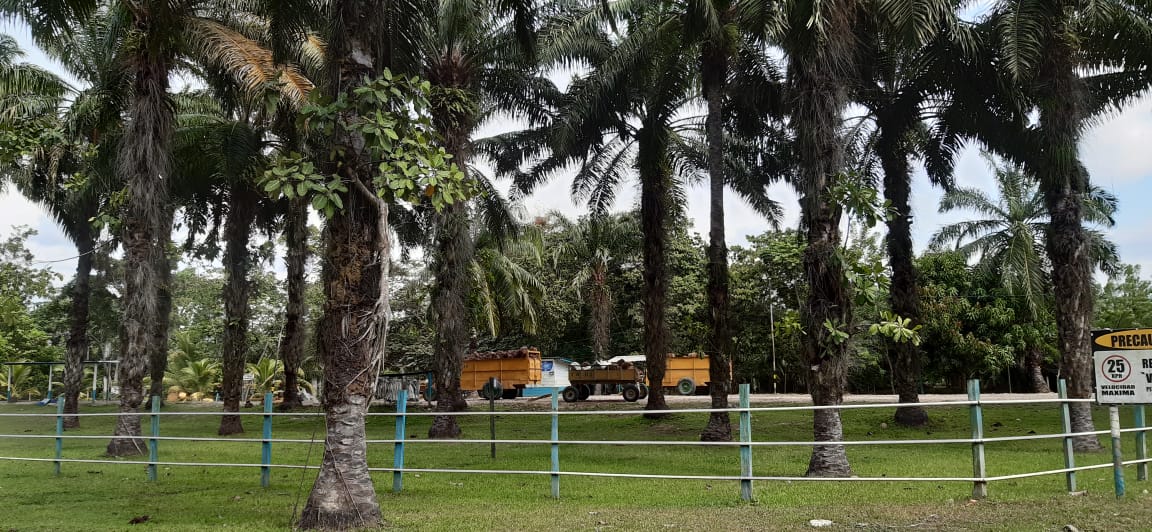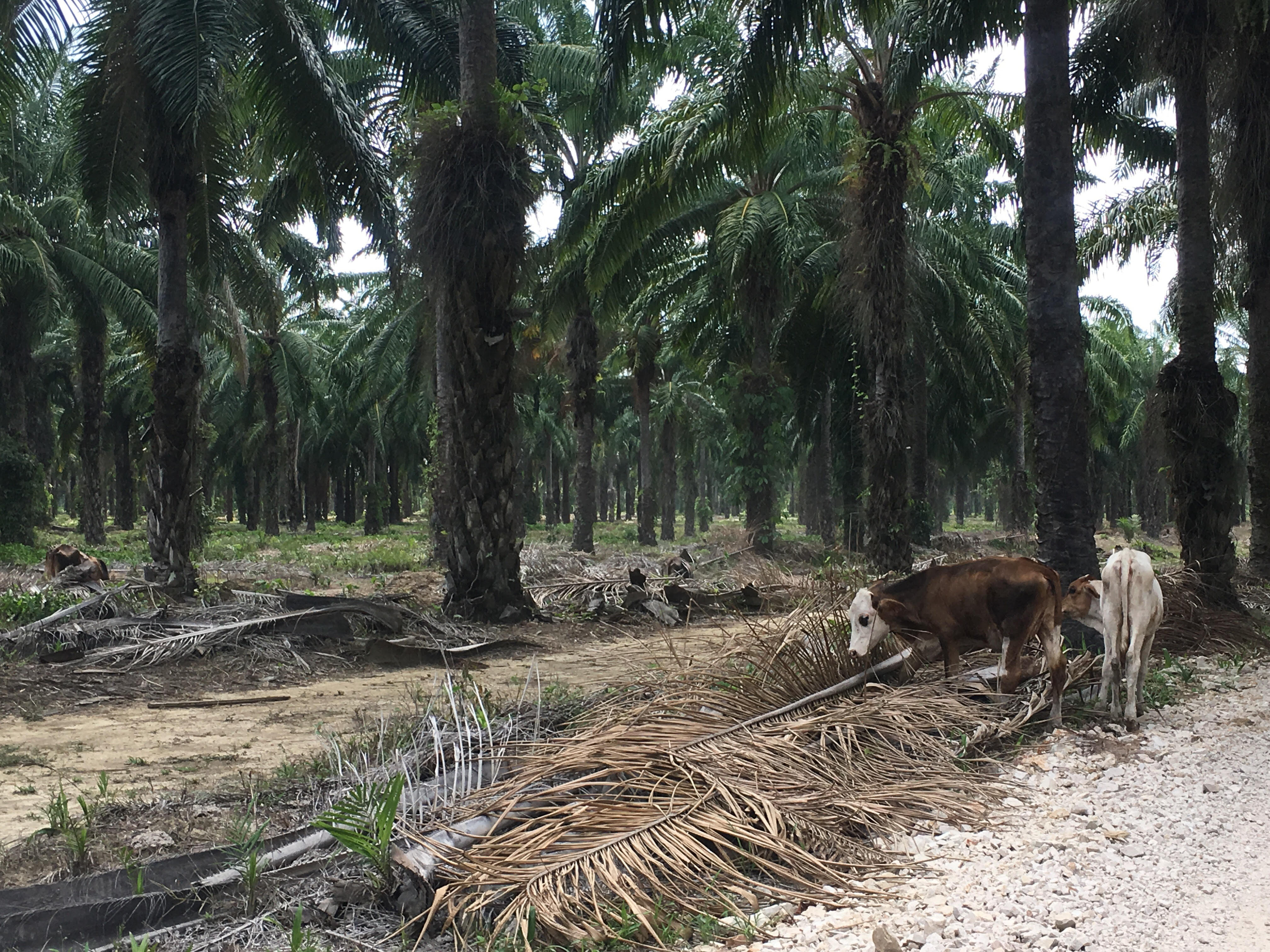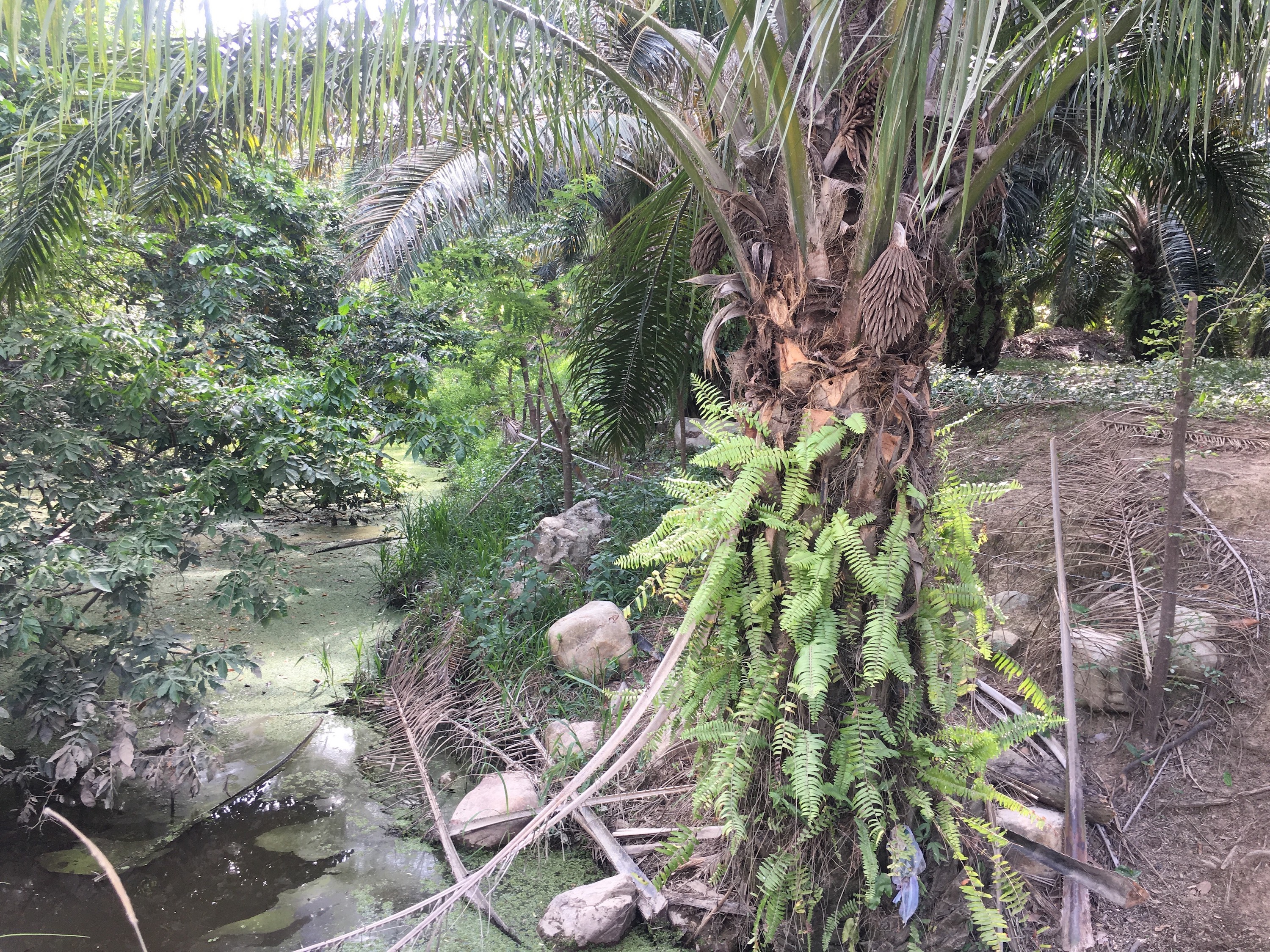- According to the Honduran Ministry of Agriculture and Livestock (SAG), 190,000 hectares of oil palm are being cultivated in Honduras. They extend from the Cortés department to the Colón department along the country’s Atlantic coast.
- African oil palm has taken over 20 and 30 percent of the land in Punta Izopo National Park and Jeanette Kawas National Park, respectively.
- In 2016, a fire in Jeanette Kawas National Park consumed 412 hectares of land. Fire also damaged Punta Izopo National Park in August 2019.
Residents of the community of París de Leán in Honduras say they have been dealing with dirty water for a decade. To demonstrate this, Concepción Aguilera dips a dish into the well that he built outside his house. Instead of fresh water, a rotten yellow liquid fills the container.
Even the public well that was built by the community only provides dirty water. París de Leán residents say they need to transport water into their community from other areas in order to survive.
Surprisingly, París de Leán, which is located in the Atlántida department in northern Honduras, is in a fertile valley with abundant water reserves. However, although water is naturally plentiful around París de Leán, the growth of the oil palm industry in the area has sparked concerns about water scarcity and land use. Aguilera pointed out extensive oil palm crops on land that he said once held a green forest filled with animals. The crops are owned by the Dinant Corporation, a Honduran company founded in 1960 by Miguel Facussé Barjum.

The beginning
About forty years ago, Concepción Aguilera’s father, José Aguilera, heard that northern Honduras had abundant sources of water, which made it easy to grow rice and corn. With high expectations that were mostly fulfilled, their family moved to northern Honduras from the southern part of the country. José Aguilera joined a small cooperative that owned the land. His family had access to housing, work, food, and education.
In 1990, Rafael Leonardo Callejas became the president of Honduras. In 1992, the Law for the Modernization and Development of the Agricultural Sector (LMDSA) was approved. The LMDSA stripped the benefits of the Agrarian Reform Law of 1962, which had previously protected farmers.

Concepción Aguilera recalled that the new law weakened the cooperative to which his father had belonged, since farmers could now sell their plots. This allowed landowners from Asia and elsewhere in Central America to expand their businesses into Honduras.
Aguilera said some members of the cooperative refused to give up their land, despite daily visits from a representative of the Dinant Corporation who tried to convince them to sell. He added that the corporation had already bought about 550 hectares in the area, but they wanted more.
According to members of the cooperative, the Dinant Corporation allied with the government and announced it was going to fumigate fields by plane. Afraid that their crops would be contaminated and destroyed, the farmers decided to sell their land.
Eleuterio Gámez is one of the founders of París de Leán. He said that it has been difficult for the farmers to organize to prevent the oil palm industry from expanding due to a general lack of information and the farmers’ fear of confronting large corporations.

Invaded and burned
In the Atlántida department, which encompasses París de Leán, oil palm plantations extend for miles. Those who live in the department, especially young people, must decide between two main livelihood options: either harvest palm fruit in the plantations or leave to live elsewhere.
According to the Honduran Ministry of Agriculture and Livestock (SAG), 190,000 hectares of oil palm are currently cultivated in Honduras. Plantations extend from the Cortés department to the Colón department along the country’s Atlantic coast.
The Atlántida department is considered one of the main water sources in Honduras. More than half of the department is protected land, including the department’s four national parks: Jeanette Kawas, Pico Bonito, Nombre de Dios and Punta Izopo. These parks protect and sustain multitudes of animal and plant species, as well as many human communities.
Tela Bay, also located in the Atlántida department, is an important part of the Honduran Caribbean biological corridor, and plays a key role in maintaining ecological balance along the country’s Atlantic coast. However, according to research by the Foundation for the Protection of the Lancetilla, Punta Sal, Punta Izopo, and Texiguat National Parks (PROLANSATE), this area is seriously threatened by public policies that favor economic growth and the advancement of agriculture. PROLANSATE warns that Tela Bay is being impacted by slash-and-burn farming, the draining of wetlands, and by the agricultural chemicals used in oil palm cultivation.

According to Ferdinand Florentino, president of PROLANSATE, the Honduran government has granted 157 hectares of land in Atlántida to agricultural corporations. Additionally, oil palm plantations have taken over 20 and 30 percent of the land in Punta Izopo National Park and Jeanette Kawas National Park, respectively. Other protected areas of Honduras, including the Cuero y Salado Wildlife Refuge, have also been invaded for agriculture.
Florentino claimed there is a network of corruption that is, in effect, working with the approval of the Honduran government. He said that his office delivers information to the Environmental Prosecutor of Honduras, but that nothing is corrected in the end.
Since 2009, Honduras has been experiencing increasing “institutional weakness” due, in part, to the coup d’état in the country, according to attorney Martín Fernández of the Broad Movement for Dignity and Justice. For example, Fernández said that illegal fires are sometimes started in national parks so that the forested areas are cleared, which can then be used to justify oil palm cultivation.
Two protected areas that have been damaged by fires are Punta Izopo National Park and Jeanette Kawas National Park, the latter of which lost 412 acres in during the 2016 fire season. Shortly afterwards, non-government researchers found freshly planted oil palm and bottles of gasoline where the fires originated.

Concepción Aguilera says that when he and his neighbors speak out against this burning, they are threatened.
According to Florentino, illegal fires have reached the center of Jeanette Kawas National Park. “We are reaching a point of no return,” Florentino said. “There are no clear government policies on environmental matters.”
Mongabay Latam contacted the Dinant Corporation through its office located in the city of San Pedro Sula in northern Honduras. However, there was no response.
No consequences for those involved
Florentino urges investigation of the identities of the business owners, politicians, and powerful families who own property titles to land in Honduran protected areas and who, he says, have contributed to their destruction.
According to Francois Ligeard, an environmental activist and local government leader from the municipality of Tela, “there are politicians and business owners who have invaded and want to continue invading. It seems that they are given a green light by the Honduran government to burn, cultivate, and destroy natural resources.”

Through his municipal management position, Ligeard has attempted to obtain an emergency declaration with the objective of safeguarding these natural reserves. But he says his attempts have not been successful.
In early 2019, the municipality of Tela requested that President Juan Orlando Hernández immediately intervene to stop the destruction of national parks and prevent the establishment of additional oil palm plantations. However, municipality representatives say there was no response.
According to Ligeard, “the impact [on the national parks] has been such that not only has water disappeared, but lagoon and marine species have been reduced as well.”
Iris Aquino, the director of the Forest Region of Atlántida within the Institute for Forest Conservation (ICF) of Honduras, confirmed that population growth, illegal logging, the commercialization of wildlife, and monoculture plantations are all affecting the country’s national parks and other protected areas.
“In the last few decades, there has been an increase in monocultures, predominantly along the northern coast. As a national institution, we are not opposed to [oil] palm. Our work is to regulate its cultivation and ensure that it is not planted in protected areas,” Aquino said. She added that the Honduran government has begun to work with the oil palm industry to establish crops in safer areas. Aquino also acknowledged that many institutions are responsible for the problem and that “there is a large delay in the prosecution of cases.”
According to Juan Mejía, an engineer who focuses on ecology and sustainable development, one 12-year-old oil palm tree consumes 10 to 13 gallons of water per day. “The amount of water extracted by the palm cannot be replenished,” Mejía said. He added that the rainfall the plantations receive does not soak deep into the ground and often discharges straight into the ocean, rivers and other water sources.
Central America experienced one of its driest years in recent decades in 2019. Extensive monocultures taking up excessive amounts of water exacerbated the water shortage, according to the NGO Broad Movement for Dignity and Justice. Furthermore, according to the National Risk Management Advocacy Organization, droughts reduced grains crop yields to the point at which many Hondurans are forced to pay higher prices for basic commodities because of the lack of supply.

According to the Organized Social Movement (MOSO), an NGO based in the city of La Ceiba, 95% of La Ceiba households did not have water as of October 2019. Osman Suazo, coordinator of MOSO, said that “the cultivation of [oil] palm continues to expand uncontrollably, which increases forest devastation. This threatens food sovereignty, countless communities’ access to drinking water, and the biodiversity of forested areas.”
A new organization called the Atlántida Movement for Life and Dignity is urging the government to declare a ban on oil palm expansion in the Atlántida department.
For Concepción Aguilera, that possible declaration could not come soon enough. With a nostalgic smile, he shares his hope that greener days of fruit, fish and abundant clean water will someday return.
This is a translated and adapted version of a story that was produced by Mongabay Latam and first published on October 8, 2019.
Banner image by Lesly Frazier..
Feedback: Use this form to send a message to the editor of this post. If you want to post a public comment, you can do that at the bottom of the page.
